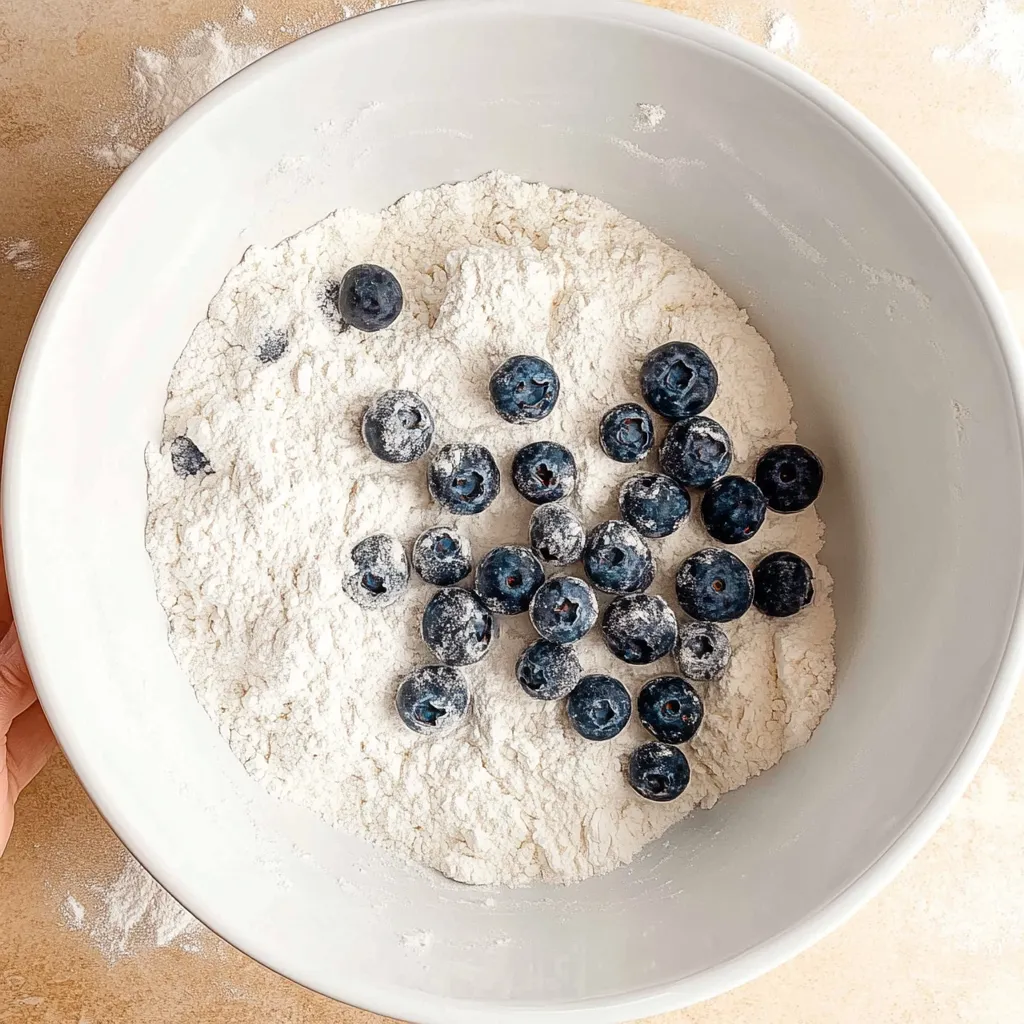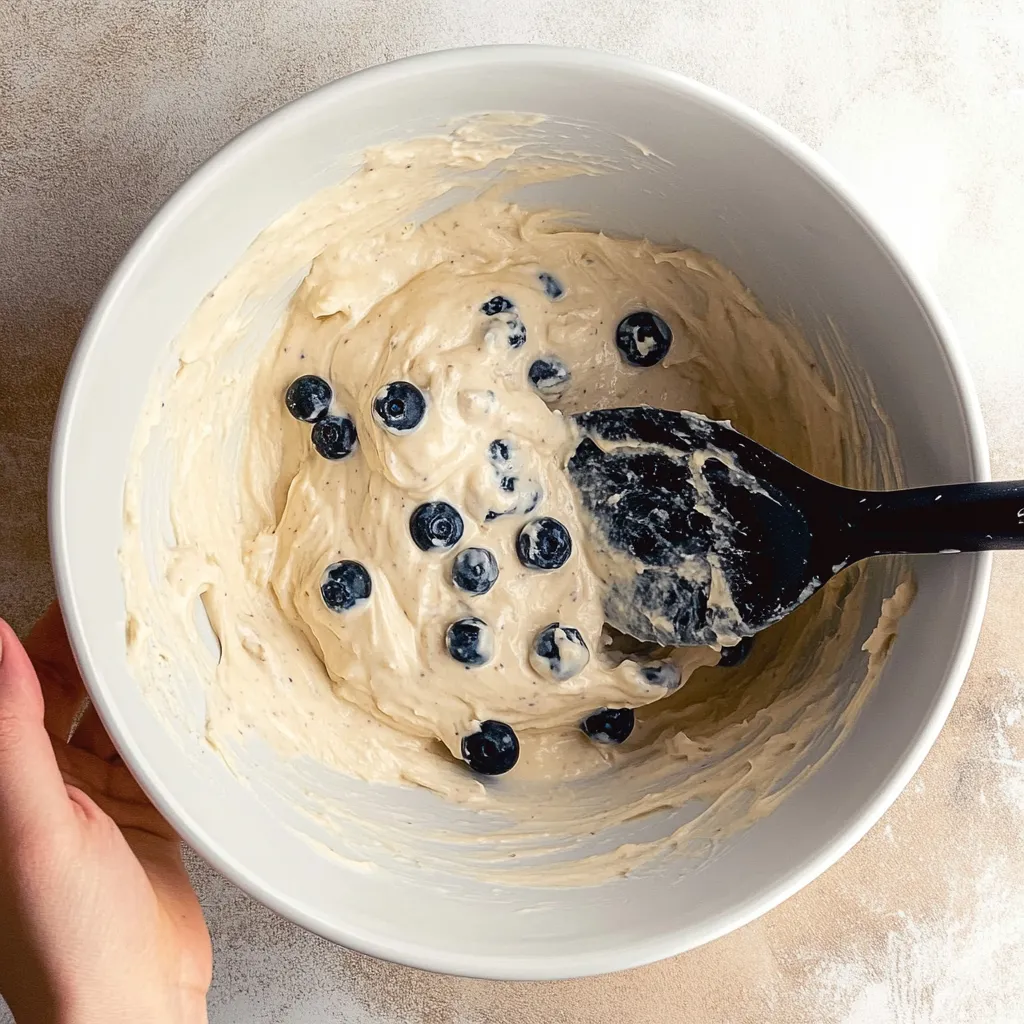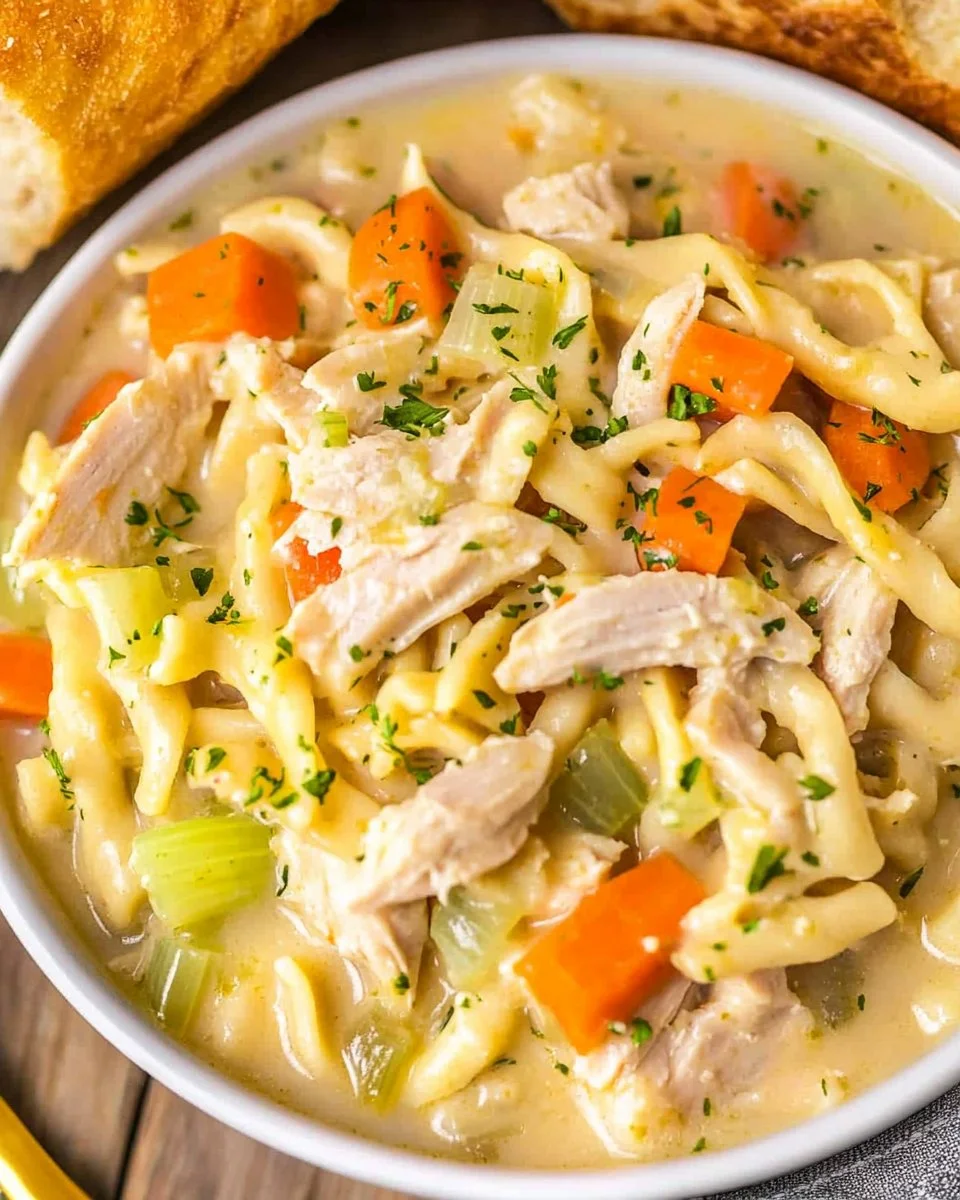Get ready to transform your morning bake or afternoon snack! If you’ve got a sourdough starter bubbling away, you’re holding the key to some truly fantastic Sourdough Blueberry Muffins. Forget basic muffins; we’re talking about adding a layer of flavor complexity and achieving a wonderfully tender texture, all while using up that sourdough discard you might otherwise toss. This recipe isn’t just delicious; it’s an easy and approachable way to bake with sourdough. Let’s bake something amazing together!
What Makes Sourdough Blueberry Muffins So Special?
So, why bother adding sourdough starter to blueberry muffins? Isn’t it just for tangy bread? Not at all! Using sourdough, especially the discard, brings unique benefits to quick breads like muffins, taking them from good to genuinely memorable.
The Secret to Moist And Tender Sourdough Blueberry Muffins
Here’s where the magic happens. Sourdough discard adds acidity and moisture to the batter. The acidity reacts with leaveners like baking soda, giving the muffins an extra lift. More importantly, it helps break down some of the gluten in the flour, even during the short mixing and baking time. This results in a muffin crumb that is incredibly tender and moist. You’ll notice a softer texture compared to many traditional muffin recipes, making these Sourdough Blueberry Muffins particularly delightful.
Are Sourdough Blueberry Muffins Sour?
Let’s tackle this head-on: usually, no. While you might detect a slight, pleasant tang, these muffins aren’t typically “sour” like a traditional sourdough loaf. The sweetness from the sugar, the richness from the fat, and the burst of blueberries balance any potential tang beautifully. Most people notice a deeper, more satisfying flavor overall.
Mastering Your Sourdough Starter for This Recipe
Using sourdough discard is straightforward, but understanding a few nuances about your starter can help ensure perfect Sourdough Blueberry Muffins every time.
Sourdough Discard vs. Active Starter: Does it Matter for Muffins?
For this type of recipe, discard is generally preferred. “Discard” refers to the portion of your starter you remove before feeding it. It’s typically less active, might be a bit more acidic, and doesn’t have the leavening power needed for bread on its own. The active starter can be used, but it doesn’t offer significant advantages here since we’re relying on baking soda and powder for the lift. Using a discard is the perfect way to utilize something you’d otherwise remove. So, save your active starter for bread and use the discard for these amazing sourdough blueberry muffins!
Key Starter Characteristics: What Consistency Works Best?
Most standard sourdough starters are maintained at 100% hydration, meaning they are fed equal weights of flour and water. Discard from this type of starter usually has a thick, pancake-batter-like consistency. This is ideal for muffin recipes as it incorporates easily without drastically changing the batter’s overall hydration. If your starter is much thicker (stiffer) or thinner, you might need to make adjustments to the liquid or flour in the recipe, but generally, standard discard works perfectly.

Essential Ingredients for Easy Sourdough Blueberry Muffins
Let’s gather what you’ll need. This recipe uses standard pantry staples alongside that key ingredient: your sourdough discard.
The Core Baker’s Pantry List
- All-Purpose Flour: Provides the main structure.
- Sourdough Discard: The star for flavor and tenderness.
- Sugar: Granulated sugar for sweetness. You can adjust slightly based on preference.
- Fat: (See next point) – Butter, oil, or even yogurt/sour cream.
- Egg: Binds the ingredients and adds richness.
- Milk: Adds moisture. Whole milk is great, but other types work too.
- Baking Powder & Baking Soda: Our chemical leaveners for that crucial muffin rise.
- Salt: Enhances all the other flavors.
- Blueberries: The essential fruity burst!
Ingredient Deep Dive: Why We Use [Melted Butter/Oil]
You have choices when it comes to fat, and each impacts the final muffin slightly:
- Melted Butter: Offers fantastic flavor and richness. It contributes to a slightly denser, but very satisfying crumb. This is a classic choice for muffins.
- Vegetable Oil (or other neutral oil): Creates a lighter, arguably moister muffin that stays soft for longer. The flavor is neutral, letting the sourdough and blueberry shine.
- Yogurt or Sour Cream: Can be used in combination with butter or oil, or partially replace them. They add moisture and a slight tang, complementing the sourdough beautifully while contributing to a very tender crumb.
For this guide, we’ll often refer to using melted butter or oil as common choices that yield excellent Sourdough Blueberry Muffins. Pick based on your preference for flavor and texture!
Selecting Your Blueberries: Fresh vs. Frozen Showdown
Both fresh and frozen blueberries work wonderfully in these muffins.
- Fresh Blueberries: Ideal when in season. Gently fold them in. If they are very large, you might consider halving them for better distribution.
- Frozen Blueberries: A fantastic year-round option. Do not thaw them before adding to the batter. Tossing frozen berries in a tablespoon of the dry flour mixture before folding them in can help prevent them from sinking or bleeding excessively into the batter. Your bake time might be slightly longer (a minute or two) when using frozen berries.
Step-by-Step Guide: Baking Perfect Sourdough Blueberry Muffins
Ready to bake? Follow these simple steps for muffin success. Remember, gentle handling is key!
Prep Work: Oven Temperature and Pan Preparation
First things first: preheat your oven! Setting the correct temperature from the start is crucial for a good rise. Aim for 400°F (200°C) initially – we might adjust this later. While the oven heats, prepare your standard 12-cup muffin tin by placing paper liners in each cup or by thoroughly greasing and flouring them.
Combining Wet Ingredients
In your medium-sized mixing bowl, whisk together all the wet ingredients. This includes your sourdough discard, egg (lightly beaten), milk, chosen fat, and vanilla extract if using. Whisk everything together until just combined. Don’t worry about making it perfectly smooth; just ensure the egg is incorporated.
Whisking the Dry Ingredients
In your large mixing bowl, add the dry ingredients: all-purpose flour, granulated sugar, baking powder, baking soda, and salt. Whisk these together thoroughly for about 30 seconds. This step is crucial as it helps evenly distribute the leavening agents (baking powder and baking soda) along with the salt throughout the flour, ensuring that each muffin rises properly and has a consistent flavor.
The Gentle Fold: Combining Wet & Dry
Gently pour the wet mixture into the bowl with the dry ingredients. Now, using your rubber spatula or wooden spoon, gently fold the ingredients together. Start from the bottom and lift, turning the bowl occasionally. Mix only until the flour streaks just disappear. The batter will likely be thick and slightly lumpy – this is perfectly fine! Overmixing develops gluten, which leads to tough, dense muffins instead of light and tender ones. This is probably the single most important step for achieving great Sourdough Blueberry Muffins.
Incorporating Blueberries
Now it’s time for the star ingredient! If you’re using frozen blueberries, coat them with a tablespoon of the dry flour mixture before folding them in. Gently fold the fresh or flour-dusted frozen blueberries into the batter. Use just a few strokes – again, avoid overmixing.
Optional Crumb Topping / Sugar Sprinkle
Want to add a little something extra?
- Crumb Topping (Streusel): Quickly mix flour, sugar, and cold butter with your fingertips until crumbly. Sprinkle over the batter before baking.
- Sugar Sprinkle: A simple sprinkle of coarse sugar over the batter before baking adds a lovely crunch and sparkle.

Baking Strategy: Initial High Heat & Temperature Reduction
Place the muffin tin in the preheated 400°F (200°C) oven. Bake for about 5-7 minutes at this higher temperature. This initial blast of heat helps the muffins rise quickly, encouraging taller domes. Then, without opening the oven door, lower the temperature to 375°F (190°C). Continue baking for another 13-18 minutes.
Checking for Doneness
The total baking time will be around 18-25 minutes, depending on your oven and whether you used fresh or frozen berries. The muffins are done when they are golden brown on top and spring back slightly when gently pressed. You can also use the classic toothpick test—insert one into the center of a muffin, and it should come out clean or with just a few moist crumbs.
Cooling Process for Best Texture
Once they’re done baking, allow the Sourdough Blueberry Muffins to cool in the muffin tin for 5–10 minutes. This allows them to sit slightly, making them easier to remove. After the initial cooling period, gently remove the muffins from the tin and place them on a wire rack to cool completely. Cooling them fully on a wire rack prevents the bottoms from becoming soggy.
Pro Tips for Flawless Sourdough Blueberry Muffins
Want to really nail this recipe? Here are a few extra tips gathered from experience to help you achieve bakery-quality results consistently.
Achieving Tall, Bakery-Style Muffin Tops
Everyone loves a muffin with a beautiful, high dome! Here are the keys:
- Don’t Overmix: We’ve said it before, but it’s crucial for a good rise.
- Fill Cups Adequately: Filling cups about three-quarters full gives the batter room to climb.
- Initial High Heat: The 400°F start encourages rapid initial rising (oven spring).
- Thick Batter: Sourdough discard often contributes to a slightly thicker batter, which helps support a taller structure.
- Resting (Optional): Some bakers find letting the batter rest for 15-20 minutes before baking allows the flour to hydrate and can improve the dome.
Ensuring Even Blueberry Distribution Throughout
Tired of all your berries sinking to the bottom? Try these tricks:
- Thick Batter: A properly (not over-) mixed batter should be thick enough to suspend the berries.
- Flour Coating: Tossing berries—especially frozen ones—in a tablespoon of the recipe’s flour mixture helps them cling to the batter and prevents them from sinking.
- Layering Technique: Add a small spoonful of plain batter to the bottom of each muffin cup first, then gently fold the berries into the remaining batter and use it to fill the cups to the top.
Common Muffin Mistakes & Sourdough Solutions
- Dense/Tough Muffins: Almost always caused by overmixing the batter. Fold gently! Also, ensure your baking powder/soda is fresh.
- Flat Muffins: Could be old leaveners, overmixing, or oven temperature being too low. Ensure accurate oven temp and use the initial high heat burst.
- Berries Sinking: The Batter might be too thin, or the berries weren’t flour-coated. See distribution tips above.
- Muffins Sticking: The Tin wasn’t greased well enough, or the muffins weren’t cooled slightly before removal. Use liners for guaranteed release.
Sourdough discard usually helps prevent toughness due to its acidity breaking down gluten, making these Sourdough Blueberry Muffins quite forgiving!
Adjusting Sweetness to Your Preference
This recipe uses a standard amount of sugar, but you can adjust it slightly. Reduce the sugar by a couple of tablespoons if you prefer a less sweet muffin, or increase it slightly if you have a sweet tooth. Remember that changing the sugar content can slightly affect the texture and browning.

Creative Variations on the Classic
Feel free to put your spin on these classic Sourdough Blueberry Muffins! Here are a few simple ideas:
Adding Spices or Different Zests
- Warm Spices: Add ½ teaspoon of cinnamon or a ¼ teaspoon of nutmeg or cardamom to the dry ingredients for a warm, cozy flavor.
- Orange Zest: Swap the lemon zest for orange zest for a different citrusy note that also pairs well with blueberries.
Incorporating Nuts or Chocolate Chips
- Nuts: Fold in ½ cup of chopped walnuts or pecans along with the blueberries for added crunch and nutty flavor.
- Chocolate Chips: White chocolate chips are particularly nice with blueberries, or use classic semi-sweet chips for a richer treat. Add about ½ to ¾ cup.
Swapping Berries (Raspberry, Mixed Berry)
Don’t have blueberries? No problem! This recipe works well with other berries:
- Raspberries: Fresh or frozen raspberries (use the same flour-coating trick for frozen). Lemon zest pairs exceptionally well here.
- Mixed Berries: Use a frozen mixed berry blend for a varied fruit flavor.
- Cranberries: Fresh or dried cranberries (especially with orange zest) make a great tart variation, particularly nice in the fall.
Frequently Asked Questions
Let’s answer a few common questions about making Sourdough Blueberry Muffins.
Can I make these gluten-free or vegan?
- Gluten-Free: This requires substituting the all-purpose flour with a quality gluten-free 1-to-1 baking blend and ensuring your sourdough starter is also maintained with gluten-free flours. Results can vary depending on the blend used.
- Vegan: You’d need to replace the egg, use plant-based milk (like almond, soy, or oat), ensure your fat is vegan (use oil or vegan butter), and confirm your sugar isn’t processed with bone char if strictly vegan. The sourdough starter itself is naturally vegan. Making these swaps will alter the texture and flavor profile.
How long does sourdough discard last in the fridge?
Sourdough discard can last quite a while in the fridge; typically, 1-2 weeks is considered optimal for recipes like this. It will develop more acidity (tang) over time. If it develops mold or a strange pink/orange hue, it’s best to discard it. A dark liquid on top is normal and can just be stirred back in or poured off.
Why are my sourdough blueberry muffins dense or flat?
The most common culprits are overmixing the batter (developing too much gluten) or using expired/inactive baking powder or baking soda. Ensure your leaveners are fresh by testing them. Also, double-check oven temperature accuracy.
Can I use a different type of flour?
While all-purpose flour gives a reliably tender result, you could experiment. Substituting some of the all-purpose flour (up to 50%) with whole wheat or spelt flour can add a nuttier flavor and more fiber, but may result in a slightly denser muffin. Bread flour is generally not recommended as it has higher gluten content and could make the muffins tougher.





